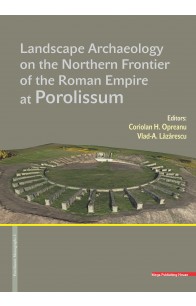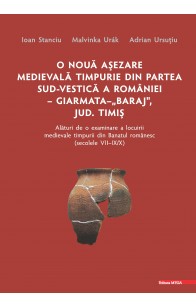Rezultate căutare pentru 'Adrian Ursu��iu'
„În urmă cu mai bine de 30 de ani, în timpul uceniciei pe șantierele arheologice ale profesorului Gheorghe Lazarovici, ne-am întâlnit pentru prima dată cu studiile interdisciplinare între arheologie și etnografie, religie etc. La vremea respectivă am considerat aceste inițiative drept un pionierat fără o finalitate în cercetarea fundamentală. La cercetările organizate de profesorul Gheorghe Lazarovici am avut onoarea să-l cunosc pe John Nandriș, care ne-a descchis drumul către această cercetare interdisciplinară. Remarc în mod deosebit aportul de nepreţuit al prof. univ. dr. John Nandriş care pe lângă faptul că a făcut posibilă implementarea unui proiect cu tematică etnoarheologică în România acelor ani a atras atenţia întregii lumi ştiinţifice asupra zonei de sud-est a Europei, mai ales a zonei muntoase înalte a munţilor din România, zone prea puţin explorate. Muzeul pe care astăzi îl conduc are bucuria de a prezenta specialiștilor, și nu numai, o serie de studii aprofundate ale acestui domeniu. Instituția noastră, pe lângă preocupările arheologice, acordă o atenție deosebită cercetărilor etnografice din spațiul Banatului de Munte. (..)
Volumul de față reunește studii deosebit de importante din ultimii 30 de ani, care deschid o nouă perspectivă asupra interdisciplinarității arheologice. Prezenta lucrare este o sinteză a unei munci asidue din partea unor cercetători de renume, care valorifică bogatul patrimoniu arheologic şi etnografic al spaţiului românesc. ” - dr. Adrian Ardeț
„The frontiers of the Roman Empire, over 5000 km long, stretch from the Atlantic coast of Scotland, along the Rhine and the Danube, also enclose the Banat region and Transylvania, then going down along the Oriental Carpathians to the Black Sea; from the southern coast of the Black Sea they continue towards the Near East until the Red Sea; then, in North Africa, they line the edge of the Sahara desert until the Atlantic coast of Morocco. Over this entire area, visible traces of fortifications, roads and settlements are still preserved, but numerous monuments still lay hidden underneath the earth. Despite the fact that the Roman frontiers crossed regions with different relief and climate, they constitute a whole in that they were designed to protect Roman territories. The research of these monuments and the preservation policy regarding them was and is unequal in the various presentday states on whose territory traces of the Roman frontier are to be found. Consequently, in the ‘80s of the 20th century, the idea of globally protecting the Roman frontiers, viewed as a unitary monument, was met. In 1987, Hadrian’s Wall in United Kingdom was declared a UNESCO monument. It was followed in 2005 by the German-Raetian sector, on which occasion the UNESCO committee decided to set up the ‘Frontiers of the Roman Empire’ site. (...)
This project through its complexity generated an interdisciplinary approach of the proposed subject stimulating such future attempts in the archaeological research field. By using the latest technical methods of non-destructive investigation the project did not damage the stratigraphy of the archaeological site obtaining instead a high amount of data otherwise time consuming judging from the archaeological excavations perspective contributing also to the preservation of the cultural heritage.” - Introduction
„A rămas destul de puţin cunoscută evoluţia locuirii medievale timpurii din partea românească a Banatului, cu presupuse schimbări intervenite în decursul vremii, alături de eventuale tendinţe și aspecte specifice. În lipsa altor surse la îndemână, fără îndoială că noi contribuţii sunt de așteptat din partea arheologiei. În ultimele trei decenii, rolul decisiv a revenit săpăturilor preventive, într-o măsură sau alta fiind investigate și în acest spaţiu noi situri, din păcate cu rezultate doar semnalate, cazul celor mai multe dintre ele. Cel de la Giarmata–Baraj a fost identificat în anul 2011 pe traseul Autostrăzii Timișoara–Lugoj, urmând la scurt timp cercetarea arheologică preventivă, susţinută de un colectiv al Institutului de Arheologie și Istoria Artei al Academiei Române din Cluj-Napoca.” (din „Cuvânt-înainte”)





